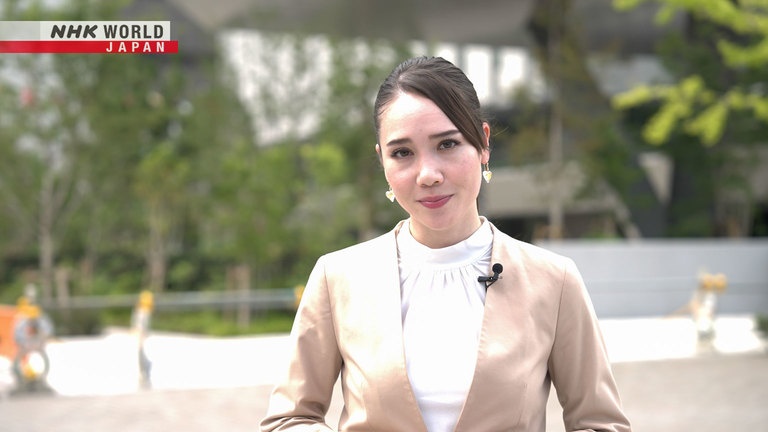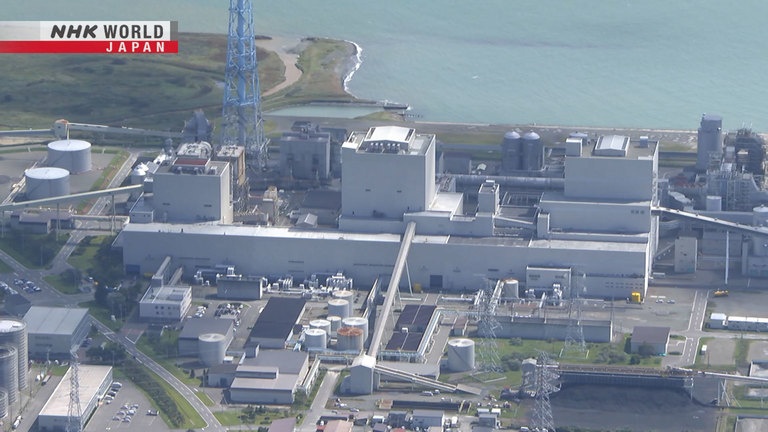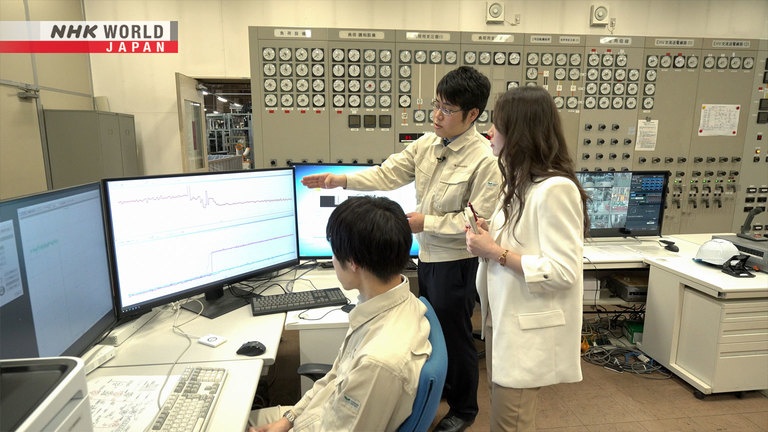#32 Large-Scale Blackouts
In September 2018, the Hokkaido Eastern Iburi Earthquake knocked out power of the entire region, affecting up to 2.95 million households. The tremor caused several power plants to shut down, disrupting the electrical frequency. This led to a chain reaction of other power plants to shut down. People's lives were greatly affected, as medical equipment failed and logistics systems were disrupted. What can we do to prevent such large-scale power outages? Find out what research institutes and local communities are doing to take steps against massive blackouts.




Transcript
Japan has a long history of natural disasters.
Now, the power of science is helping them overcome it.
BOSAI: Science that Can Save Your Life.
Large-scale blackouts are a major problem around the world.
In the Northeast Blackout of 2003, subways were shut down for 36 hours, causing major disruption to the transportation system.
Other countries are experiencing similar problems.
Japan experienced such a massive blackout triggered by a natural disaster:
the Hokkaido Eastern Iburi Earthquake, that hit on September 6, 2018.
Up to 2.95 million households in the entire region of Hokkaido were without power.
This lasted 11 hours, and it took about 50 hours to get most of the power back.
- We can't reach city hall.
- City hall?
Medical equipment shut down temporarily at hospitals caring for patients in critical condition.
Their lives were in danger.
Logistics systems were also disrupted, resulting in food supply shortage.
This caused great chaos in people's lives.
This was the first blackout in Japan in which most of the entire region was without power.
The cause of the blackout was a scenario that had not been anticipated in advance.
When the 2018 Hokkaido Eastern Iburi Earthquake hit, not all power plants in the region were damaged by the tremor.
So why was there a large-scale blackout all throughout Hokkaido?
Today, we'll investigate the cause, and find out the latest measures being taken to prevent it from happening again.
We visited Tokyo Denki University to talk to Professor Masakazu Kato, who investigated Hokkaido's massive blackout.
He's also working on measures to prevent power outages.
Through his investigation, he figured out the process that led to the widespread blackout.
The large-scale blackout did not occur
immediately after the quake.
Power was partially supplied
for about 17 minutes.
However, various events that occurred
eventually resulted in the large-scale blackout.
The earthquake hit at about 3:08 am.
The widespread blackout occurred shortly after 3:25 am.
What happened during those 17 minutes?
The first problem arose about 10 seconds after the quake, at Tomatoh-Atsuma Thermal Power Plant, located near the epicenter.
At that point, they were supplying almost half
of the demand in the Hokkaido area.
At a single power plant?
Yes. Three generators were running,
but two had stopped.
The shutdown of the two generators caused a significant 38% drop in supply in all of Hokkaido.
Furthermore, seconds after the shutdown.
The quake shook the power lines
and caused short circuits.
Hydroelectric power plants in eastern Hokkaido
were also unable to supply electricity.
Because of this, roughly 12% of the total supply in the region had also stopped.
As a result, a certain phenomenon occurred, leading to the blackout.
Because of these 2 factors,
the frequency dropped significantly.
According to Professor Kato, the large drop in frequency was the key to the Hokkaido blackout.
Electrical equipment and devices we normally use are designed to operate at a certain frequency.
In eastern Japan, the standard frequency is 50 hertz.
When the amount of power supply decreases, the frequency goes down.
And when the amount being used, or the demand decreases, the frequency goes up.
Power plants adjust its supply to meet the demand, so that this frequency is always consistent.
In addition...
When the frequency drops too low,
it can damage power plant equipment.
So they have a system to shutdown
when the frequency drops too far.
When there is a significant drop in frequency,
measures are taken by power plants to shut off electricity, in order to prevent their equipment from breaking down.
This chart shows the frequency at the time of the Hokkaido earthquake.
It shows that the frequency dropped several times during the 17 minutes, before the blackout at 3:25.
Immediately after the earthquake, thermal and hydroelectric power plants together lost about half of their supply capacity, in just 20 seconds.
The frequency at this time dropped to 46.1 hertz.
However, by one minute after the quake, the frequency had been restored.
That is due to a certain countermeasure that kicked in.
When there is a great drop in frequency,
a device called UFR is used to stabilize
by cutting power in areas
not affected by blackout.
These are UFR devices installed at substations.
When they detect frequency dropping below a certain value, they stop the transmission of power to a part of the distribution area.
It forces power to be cut off.
This mechanism intentionally reduces the demand and balances it with supply.
By deliberately cutting power to a small area, it helps prevent a total blackout of the entire system.
The power outage that had occurred in some areas immediately after the earthquake was caused by this system.
Meanwhile, another countermeasure had kicked in to restore the frequency to its original level.
It is the interconnection facility built between Hokkaido and Honshu.
When a frequency drop is detected, power is automatically supplied from Honshu.
These measures had stabilized the frequency, and prevented the occurrence of a total blackout.
However, problems began around 3 minutes after the tremor.
The earthquake hit in the middle of the night.
People turned on their lights and TV
so the demand rose sharply.
I would do the same
in such a situation.
The increase in household electricity consumption created an imbalance between supply and demand, causing the frequency to drop.
But this time, the output of the remaining power plants was increased to deal with the situation.
However, there were further complications that followed.
12 minutes after the earthquake, the one undamaged generator, that was still running, sustained damage.
The power output dropped, and the frequency also fell.
At this time, the UFR system in a different area was activated.
By expanding the area of power outage, demand was reduced, and the frequency was restored.
However, the damaged generator could not be restored, and the output continued to drop.
17 minutes after the earthquake, the generator completely shut down.
The frequency dropped sharply,
but all of the UFR available were used.
There were no more places to cut the power from.
Ultimately, the frequency continued to drop
until the total blackout.
This is how, 17 minutes after the earthquake, the power supply was completely cut off,
leading to the blackout of the entire Hokkaido area.
As a result, it took more than two days for power to be fully restored, causing chaos at medical facilities.
Large-scale blackouts put people's lives in danger.
Experts warn that an earthquake will hit Tokyo in the near future.
There are serious concerns that it could also cause massive power outages and blackouts.
What can we do to prevent a blackout that would knock out power of the entire region?
Currently, power companies aren't the only ones making an effort to prevent large-scale blackouts.
Let's find out.
Blackouts are a great threat to the Tokyo metropolitan area.
The key to mitigating blackouts is photovoltaics, or PV, which is becoming more widespread in recent years.
We spoke with Hayato Sato.
Compared to thermal power plants,
PV is more likely to shut down
during frequency fluctuations.
PV inverters are designed to stop shortly after the frequency becomes unstable.
If an earthquake or other disasters occur during the daytime,
a chain of solar PV shutdown can occur, causing a significant drop in supply and possibly a blackout.
The newly developed system predicts future frequency drops,
by looking at the rate of change of when the PV inverter stopped and the frequency began to drop.
By cutting off the demand ahead of time it helps restore the frequency.
We asked them to test the new method.
The new UFR device, which blocks the demand for electricity, was set on one of the two PV inverters.
The experiment was conducted simulating a scenario
in which an earthquake damages the thermal power plant, and causes the frequency to drop.
This is a simulation of a generator shutdown.
3, 2, 1, shutdown.
As the power supply dropped, the frequency also dropped, but stops at 49 hertz.
At this time, the thermal generator had shut down, followed by one PV inverter,
but the UFR device prevented further drop in frequency for the entire system, by cutting off the demand.
The frequency hasn't dropped.
The new system helped stabilize the frequency.
This is a graph from the experiment.
The first PV inverter shut down, due to the thermal power plant shutdown.
And merely 0.1 seconds after the first PV inverter stopped, the UFR device installed on the second unit was activated,
which helped control the drop in frequency to about 49.2.
Currently, research and development is underway in hopes of commercializing, this technology.
When a blackout occurs, it has a major impact on our lives.
In addition to power companies and research institutes, local communities are taking steps against blackouts through self-help efforts.
A blackout can greatly disrupt the lives of each and every one of us.
To address this issue, one of the steps they have taken in Tokyo is this bus.
This is an electric bus that can serve
as a battery charger.
A charger?
These ordinary power outlets are used.
I see 4 sets.
Capable of charging more than 2,000 smartphones, this bus can be used in various ways, including providing power supply at evacuation centers.
And this is a warehouse for storing emergency supplies.
This is the building's emergency generator.
During a blackout, the generator provides power to the lift for transporting supplies.
They have stocked not only food, but also zinc-air batteries, in case of a disaster.
When the battery is taken out of the bag, it reacts to oxygen, and starts generating electricity.
Through these various efforts, the city has a system in place, ready to respond in the event of a blackout.
Large-scale blackouts cause serious damage to our society and to our lives.
In order to prevent suffering from power failure, it's important to be prepared for the duration of the power loss,
by stocking up with supplies such as extra batteries, food and water.